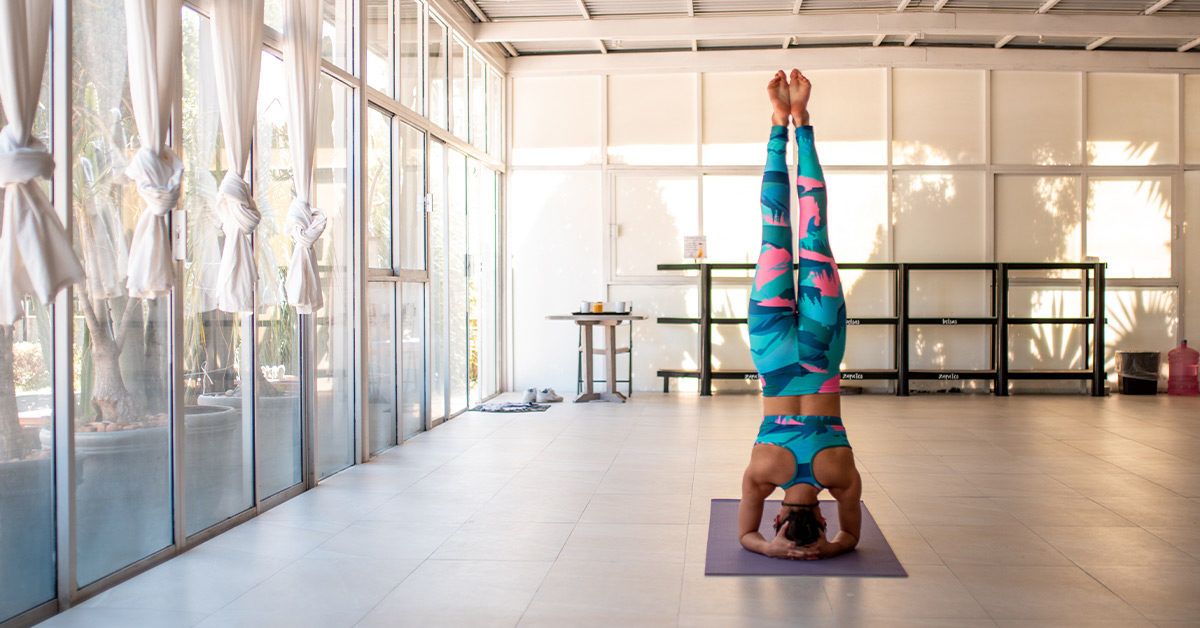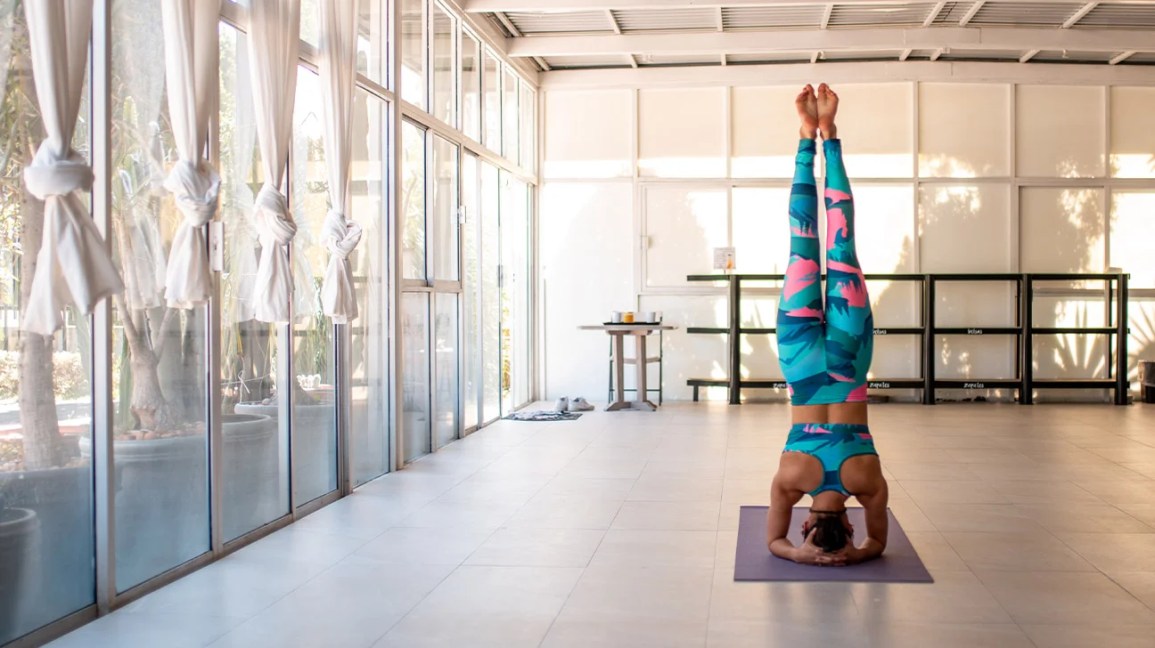To do a headstand safely, follow these steps: Start by positioning your elbows and forearms on the ground with your fingers interlocked. Then, place the top of your head on the mat, tucking your chin towards your chest.
Engage your core and slowly lift your legs off the ground, keeping them straight. Balance your weight evenly on your arms and head, breathing deeply and maintaining a solid core for stability. Doing a headstand can be an exhilarating and challenging
Although it may seem intimidating, with proper technique and practice, anyone can learn to do a headstand safely. Whether you are a beginner or have some experience, this guide will walk you through the steps to execute a headstand with stability and ease. By following these instructions closely, you will be able to master the art of the headstand and reap its numerous physical and mental benefits. So, get ready to turn your world upside down and embark on an exciting journey into the world of headstands.
Benefits Of Doing A Headstand
Discover the many benefits of incorporating headstands into your fitness routine. This step-by-step guide will ensure you perform headstands safely and reap the rewards of this stimulating and challenging exercise.
Engaging in a regular headstand practice can lead to numerous benefits for both the mind and body. From enhancing upper body strength to boosting circulation and increasing focus and concentration, this powerful inversion pose has a wide range of advantages. Let’s explore each benefit in detail.
Improves Upper Body Strength
One of the significant benefits of practicing headstands is the improvement in upper-body strength. By consistently engaging the muscles in your arms, shoulders, and core, headstands help to build strong and stable upper body strength. This not only aids in performing advanced yoga poses but also in everyday activities that require upper body strength, such as carrying groceries or lifting objects.
Boosts Circulation And Lymphatic Flow
Doing headstands can also have a positive impact on your overall circulation and lymphatic flow. When you invert your body in a headstand, it allows for better blood flow to the brain, resulting in increased oxygenation and nutrient delivery to this vital organ. Additionally, the lymphatic system, responsible for eliminating toxins and waste from our bodies, benefits from the gentle stimulation caused by the inversion, leading to improved detoxification.
Increases Focus And Concentration
An often overlooked benefit of practising headstands is the enhancement of focus and concentration. Balancing upside down requires mental concentration and presence, which can help improve your ability to stay focused on other aspects of life as well. By training your mind to stay centred and focused during a headstand, you develop greater mindfulness and concentration that can be applied to various tasks, whether it’s studying, working, or simply being present at the moment.

Preparing For A Headstand
Are you ready to take your yoga practice to the next level? Learning how to do a headstand can provide numerous benefits for both the body and mind. However, before attempting this challenging inversion, it is crucial to prepare your body to ensure safety and stability properly. In this section, we will discuss critical steps to help you prepare for a headstand: strengthening the core muscles, opening the shoulders and chest, and building wrist strength.
Strengthening The Core Muscles
One of the most critical aspects of performing a headstand safely is having a solid core. This includes your abdominal and lower back muscles. Engaging these muscles helps in maintaining stability and balance during the inversion. Incorporate exercises such as plank pose, boat pose, and bicycle crunches into your routine.
Opening The Shoulders And Chest
Opening up your shoulders and chest is essential for achieving the proper alignment in a headstand. Tightness in these areas can not only hinder your ability to balance but also increase the risk of straining your neck and upper back. Stretching exercises like eagle arms, upward-facing dog pose, and shoulder rolls can help increase flexibility and release tension in these areas.
Building Wrist Strength
Strong wrists are vital when it comes to safely practising a headstand. As your hands support your body weight, it is essential to ensure that your wrists are strong and stable. Incorporate exercises such as wrist curls and stretches into your routine to build strength and improve flexibility in this area. Additionally, using props like yoga blocks or a folded towel to help support your wrists during the preparation phase can be helpful.
By following these steps to prepare your body for a headstand, you can enhance your overall stability and minimize the risk of injury. Remember to always listen to your body and progress at your own pace. Once you feel confident and comfortable with the preparation phase, you will be ready to move on to the next step: performing a headstand.
Step-by-step Guide To Doing A Headstand
Discover a step-by-step guide for doing a headstand safely with this comprehensive tutorial. Follow these simple steps to master the skill and enjoy the incredible benefits of this invigorating yoga pose.
Setting Up The Foundation
To safely master the headstand pose, it’s essential to establish a strong foundation. Begin by finding a clear and spacious area where you can comfortably practice. Place a non-slip mat or blanket on the floor to provide grip and cushioning for your head.
Engaging The Core And Legs
Once you have set up your space, it’s time to engage your core and legs. Start by kneeling on the mat with your knees hip-width apart. Place your forearms on the ground, interlacing your fingers and creating a solid base for your head.
Balancing And Finding Stability
Now that your core and legs are engaged focus on finding balance and stability. Tuck your toes under and lift your hips, straightening your legs. Slowly walk your feet towards your face, bending at the waist. As you do this, maintain a strong core and engage your leg muscles to support your weight.
Entering And Exiting The Pose Safely
Entering and exiting the headstand pose safely is crucial to avoid any injuries. To enter the pose, gradually lift one leg off the ground, bending it at the knee. Use your core and leg strength to lift the other leg off the ground, coming into a fully extended headstand.
To exit the pose safely, lower one leg at a time and bend your knees as you come back to the starting position. Take your time and listen to your body throughout the process.
By following this step-by-step guide, you’ll be able to safely do a headstand and reap the physical and mental benefits of this empowering pose. Remember to always practice with patience and gradually increase your strength and flexibility over time. Keep in mind that consistency and proper form are crucial to mastering the headstand pose safely.


Frequently Asked Questions For How To Do A Headstand Safely: Follow These Steps
How To Do A Headstand Safely?
To safely do a headstand, follow these guidelines: 1. Warm up your body and stretch your neck, shoulders, and core muscles. 2. Find a stable surface and position your forearms on the ground. 3. Place the top of your head on the floor, forming a tripod with your hands.
4. Engage your core and slowly lift your legs into the air. 5. Maintain a straight line from head to toe and breathe deeply.
How Do You Fall Safely In A Headstand?
To fall safely in a headstand, follow these guidelines: 1. Engage core muscles for stability. 2. Keep your gaze forward and your neck in alignment. 3. Control your descent by bending your knees and rolling onto your back. 4. Avoid letting your head hit the ground.
5. Practice under the guidance of a qualified instructor.
What Precautions Should Be Taken While Doing Headstand?
To safely do a headstand, remember these precautions: Keep your neck aligned and supported. Use a soft surface or mat to cushion your head. Build strength and balance gradually. Always have a spotter or instructor nearby. Don’t stay in the position for too long to avoid overexertion.
How Do You Prepare For A Headstand?
To prepare for a headstand, follow these steps: 1. Find a clear and safe area to practice. 2. Start with building strength in your upper body and core. 3. Gradually progress to practising against a wall for support. 4. Focus on proper alignment and engage your core muscles.
5. Seek guidance from a qualified yoga instructor for further assistance.
Conclusion
Practising a headstand can be both exhilarating and beneficial if done safely. By following the steps outlined in this blog post, you can minimize the risk of injury and ensure a successful experience. Remember to build strength gradually, maintain proper alignment, and listen to your body.
With practice and patience, you can master this challenging pose and reap the many physical and mental benefits it offers. So go ahead, give it a try and enjoy the upside-down perspective!

